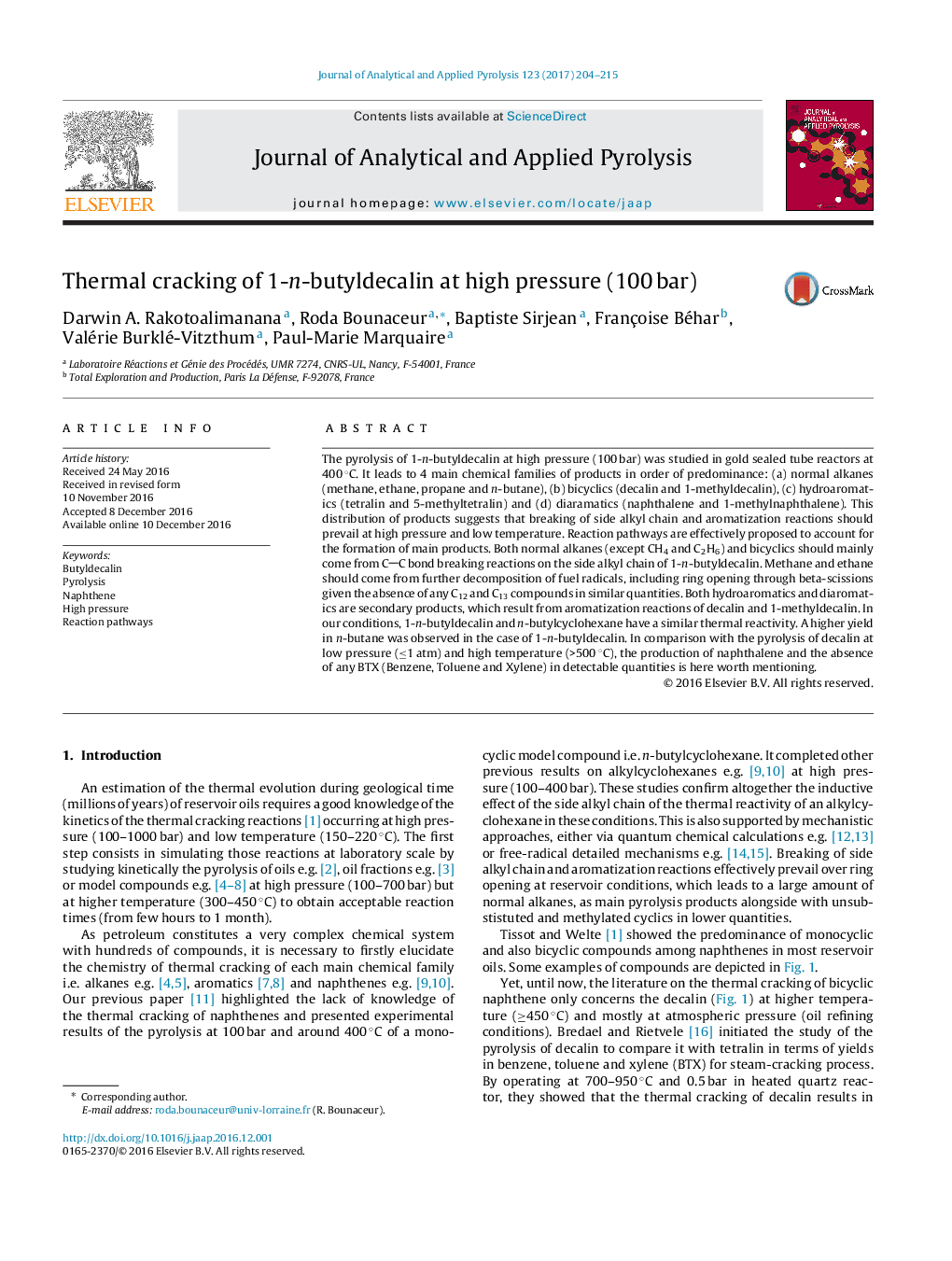| کد مقاله | کد نشریه | سال انتشار | مقاله انگلیسی | نسخه تمام متن |
|---|---|---|---|---|
| 5134539 | 1492954 | 2017 | 12 صفحه PDF | دانلود رایگان |

- Study of the pyrolysis at 100 bar and 400 °C of 1-n-butyldecalin in gold sealed tubes.
- Pyrolysis mainly leads to n-alkanes, bicyclics, hydroaromatics and diaromatics.
- Reaction pathways leading to main pyrolysis products are proposed.
- BDE of 1-n-decalin are calculated to guide our proposed mechanisms.
The pyrolysis of 1-n-butyldecalin at high pressure (100 bar) was studied in gold sealed tube reactors at 400 °C. It leads to 4 main chemical families of products in order of predominance: (a) normal alkanes (methane, ethane, propane and n-butane), (b) bicyclics (decalin and 1-methyldecalin), (c) hydroaromatics (tetralin and 5-methyltetralin) and (d) diaramatics (naphthalene and 1-methylnaphthalene). This distribution of products suggests that breaking of side alkyl chain and aromatization reactions should prevail at high pressure and low temperature. Reaction pathways are effectively proposed to account for the formation of main products. Both normal alkanes (except CH4 and C2H6) and bicyclics should mainly come from CC bond breaking reactions on the side alkyl chain of 1-n-butyldecalin. Methane and ethane should come from further decomposition of fuel radicals, including ring opening through beta-scissions given the absence of any C12 and C13 compounds in similar quantities. Both hydroaromatics and diaromatics are secondary products, which result from aromatization reactions of decalin and 1-methyldecalin. In our conditions, 1-n-butyldecalin and n-butylcyclohexane have a similar thermal reactivity. A higher yield in n-butane was observed in the case of 1-n-butyldecalin. In comparison with the pyrolysis of decalin at low pressure (â¤1 atm) and high temperature (>500 °C), the production of naphthalene and the absence of any BTX (Benzene, Toluene and Xylene) in detectable quantities is here worth mentioning.
174
Journal: Journal of Analytical and Applied Pyrolysis - Volume 123, January 2017, Pages 204-215